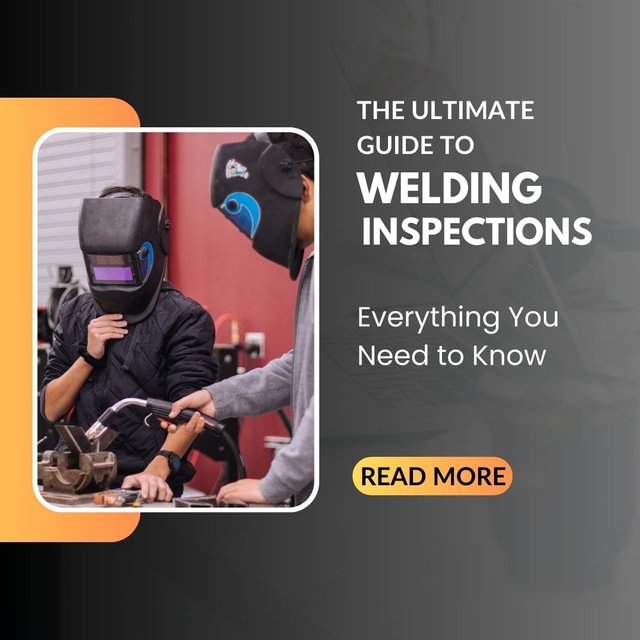
Introduction:
Welding inspections are a critical aspect of ensuring the integrity, safety, and quality of welded structures across various industries. From fabrication to construction, proper inspection procedures are essential for identifying defects, verifying compliance with standards, and maintaining high-quality welds. In this comprehensive guide, we'll explore everything you need to know about welding inspections, covering techniques, standards, and best practices.
Understanding Welding Inspections:
Welding inspections involve the systematic examination of welds and welded components to assess their quality, integrity, and adherence to specified requirements. These inspections are conducted at various stages of the welding process, including pre-weld, in-process, and post-weld inspections, using a combination of visual, non-destructive, and destructive testing methods.
Types of Welding Inspections:
Visual Inspection: Visual inspection is the most common and fundamental method of assessing weld quality. It involves visually examining welds for surface irregularities, discontinuities, and other defects. Visual inspectors use adequate lighting and inspection aids to ensure thorough examination.
Non-Destructive Testing (NDT): NDT techniques such as ultrasonic testing (UT), radiographic testing (RT), magnetic particle inspection (MPI), and dye penetrant testing (PT) are employed to detect internal and subsurface defects without altering the integrity of the weld.
Destructive Testing: Destructive testing methods, including tensile testing, bend testing, and macro etching, involve physically testing weld samples to assess mechanical properties, weld penetration, and weld soundness. While destructive testing destroys the test specimen, it provides valuable insights into weld quality.
Standards and Codes:
Welding inspections are conducted in accordance with industry standards and codes to ensure consistency, reliability, and safety. Commonly referenced standards include the American Welding Society (AWS) codes, American Society for Testing and Materials (ASTM) standards, and international standards such as ISO 3834 and ISO 17660.
Best Practices for Welding Inspections:
Proper Training and Certification: Inspectors should undergo comprehensive training and certification programs to develop the necessary skills and knowledge required for effective welding inspections. Certification programs offered by organizations such as the AWS and the International Institute of Welding (IIW) validate inspector competency.
Thorough Documentation: Accurate documentation of inspection findings, including weld defects, measurements, and test results, is essential for traceability and compliance. Inspection reports should be detailed, organized, and readily accessible for future reference.
Quality Control Measures: Implementing robust quality control measures throughout the welding process, including pre-weld qualification, in-process monitoring, and post-weld evaluation, helps maintain consistency and minimize defects.
Continuous Improvement: Regular review and evaluation of welding inspection practices, coupled with ongoing training and knowledge sharing, enable continuous improvement and optimization of inspection procedures.
Conclusion:
Welding inspections play a vital role in ensuring the quality, safety, and reliability of welded structures. By understanding the principles, techniques, and best practices outlined in this guide, inspectors can effectively evaluate welds, identify defects, and contribute to the success of welding projects. Expert weld coding and adherence to industry standards are essential for achieving optimal weld quality and performance.